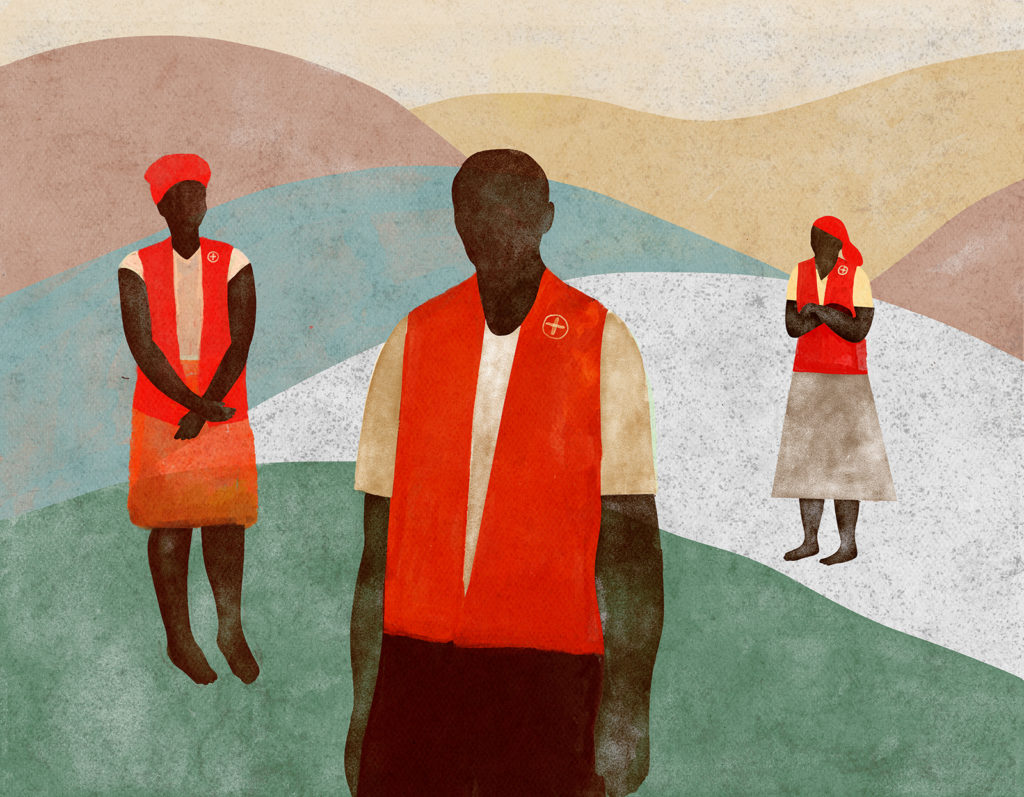
Xavier Pueyo
Description
In 2007, the Burundi Red Cross created decentralized support groups called ‘Unités Collinaires’. Each ‘Unité Collinaire’ is made up of volunteers who have gradually come together to support vulnerable people in their community. Each volunteer gives 2 to 4 hours of their time per week. Today, the Burundi Red Cross has 2920 Hill Units in all the hills of the country and a vast network of over 600,000 volunteers.
Context
In 2005, when the Burundi Red Cross began its first restructuring process, which took almost three years to complete, the Burundi Red Cross was considered a house “without a foundation”. With committees at all levels, the essential thing was missing: operational grassroots committees.
Technical details & Operations
Thus, in 2007, thanks to sustained advocacy with its Movement partners, the Burundi Red Cross Society experimented with this new approach of “Sustainable Local Resource Mobilization”. At the African level, the Burundi Red Cross was chosen, along with Ghana, to pilot and test this project supported by the International Federation of Red Cross and Red Crescent Societies.
In Burundi, the experiment concerns two provinces (Ruyigi and Karuzi) and two hills, Gasasa and Kiyange. The same leitmotiv in the communication: together we can do better to help the most vulnerable. The first “self-help groups” were then created on the Gasasa and Kiyange hills.
The first ‘self-help groups’ were formed on the two hills. The news spread very quickly and in record time, the “groups” that would become what the Burundi Red Cross proudly calls “Hill Units”. A registered trademark of the Burundi Red Cross.
The Unité Collinaire is not only the physical equivalent of the most decentralized administrative structure, the Colline. It is also the gathering of all its volunteers who have gradually come together to respond to the various forms of vulnerability felt in the community. They give 2 to 4 hours of their time per week to help the most vulnerable people identified in the community.
Since then, each volunteer is registered in a Hill Unit. The Hill Units hold weekly meetings to agree on the plan to assist the identified vulnerable people. This allows the volunteers in the Hill Units to feel united around a common goal.
Self-promotional activities
At the hill level, the Burundi Red Cross does not yet speak of Income Generating Activities (IGAs). It talks about self-help activities, those that unite the members of the Hill Units. Having identified them themselves, the members of the Hill Units implement them with the aim of having the means to always help the most vulnerable without always drawing on their reserves. The great merit of these activities is that they keep the members of the different Hill Units together and contribute to their cohesion.
Trades useful for community development
In its quest for strategies, the Burundi Red Cross has included, from its Strategic Plan 2014-2017, the promotion of community development.
Strategic Plan 2014-2017, the promotion of useful trades for community development. Volunteers have been trained as masons, carpenters, fountain builders and in other trades such as pottery, basketry, etc. in order to contribute to their development, to the development of their hill unit and their community. Through the activities they do, part of the funds they earn are paid into the accounts of the hill units.
Deployment & Impact
Today, the Burundi Red Cross has 2,920 hillside units throughout the country and a vast network of over 600,000 volunteers. Committees are operational at all levels. 15 years later, the face of the Burundi Red Cross has changed significantly and positively. The Hill Units are now considered the gateway to all Burundi Red Cross operations.





